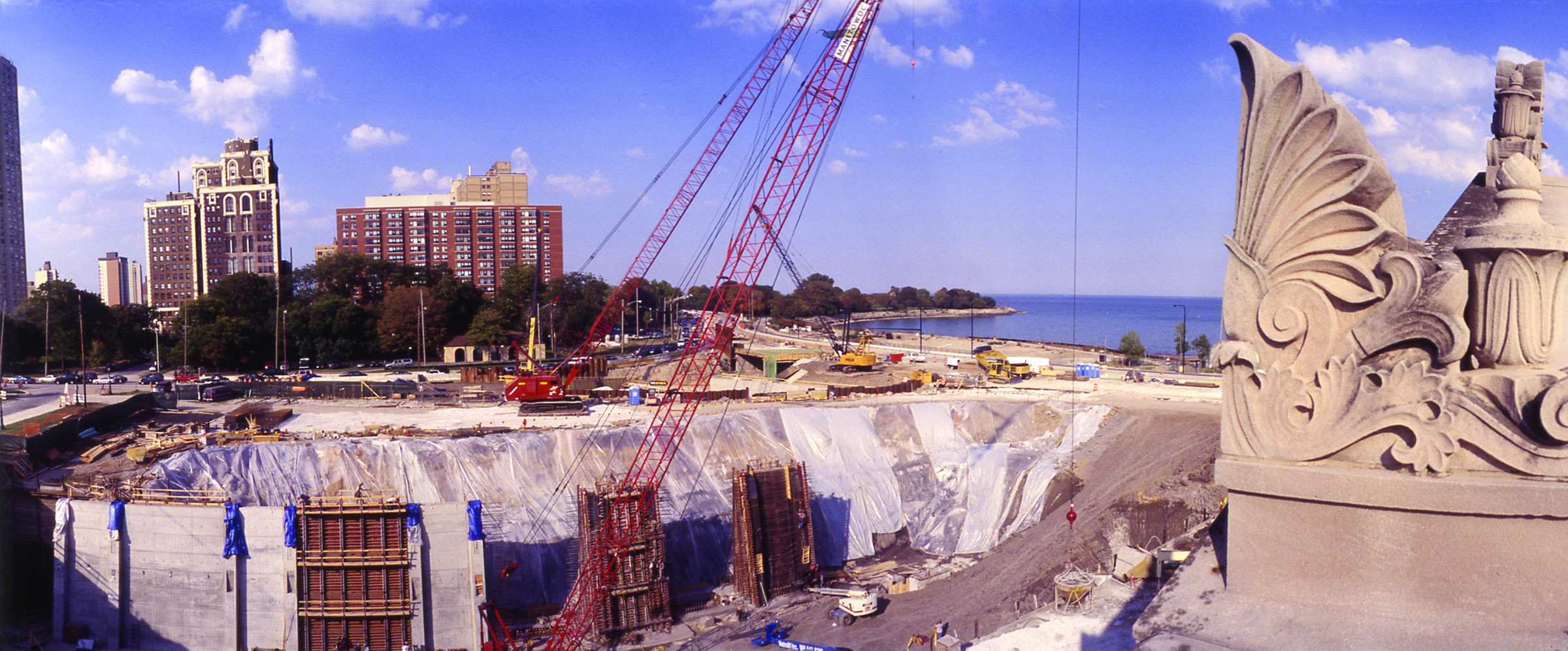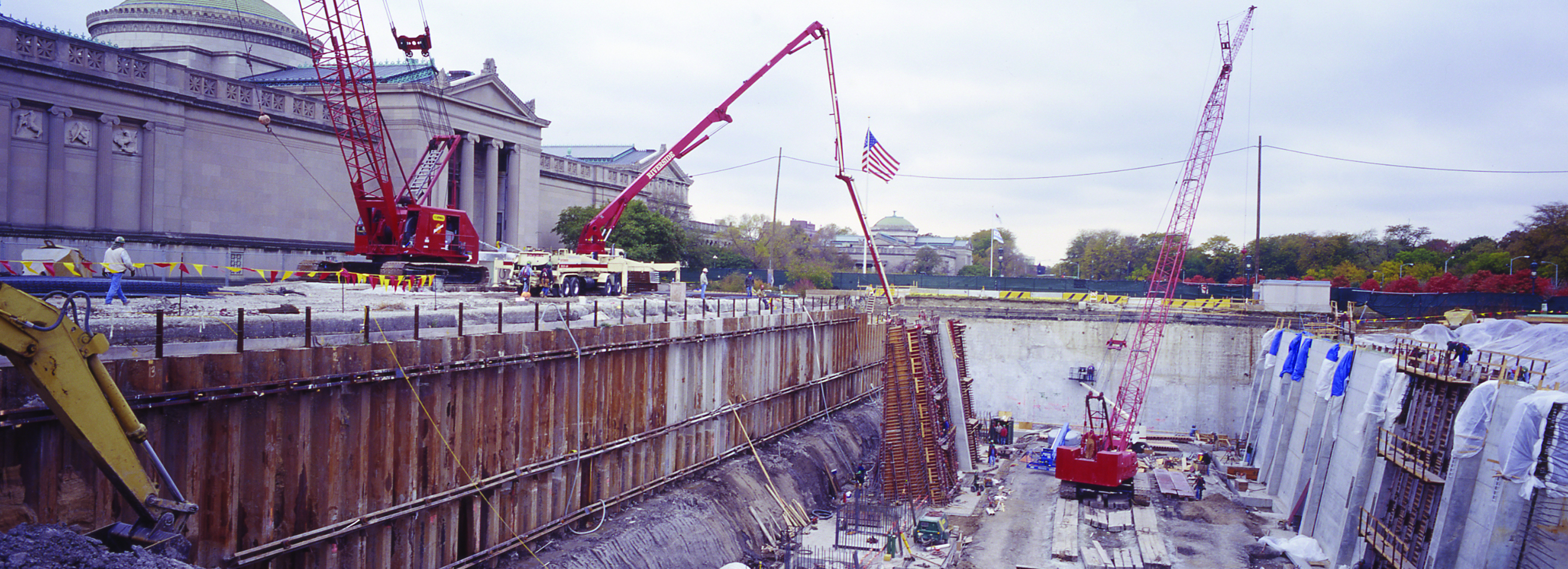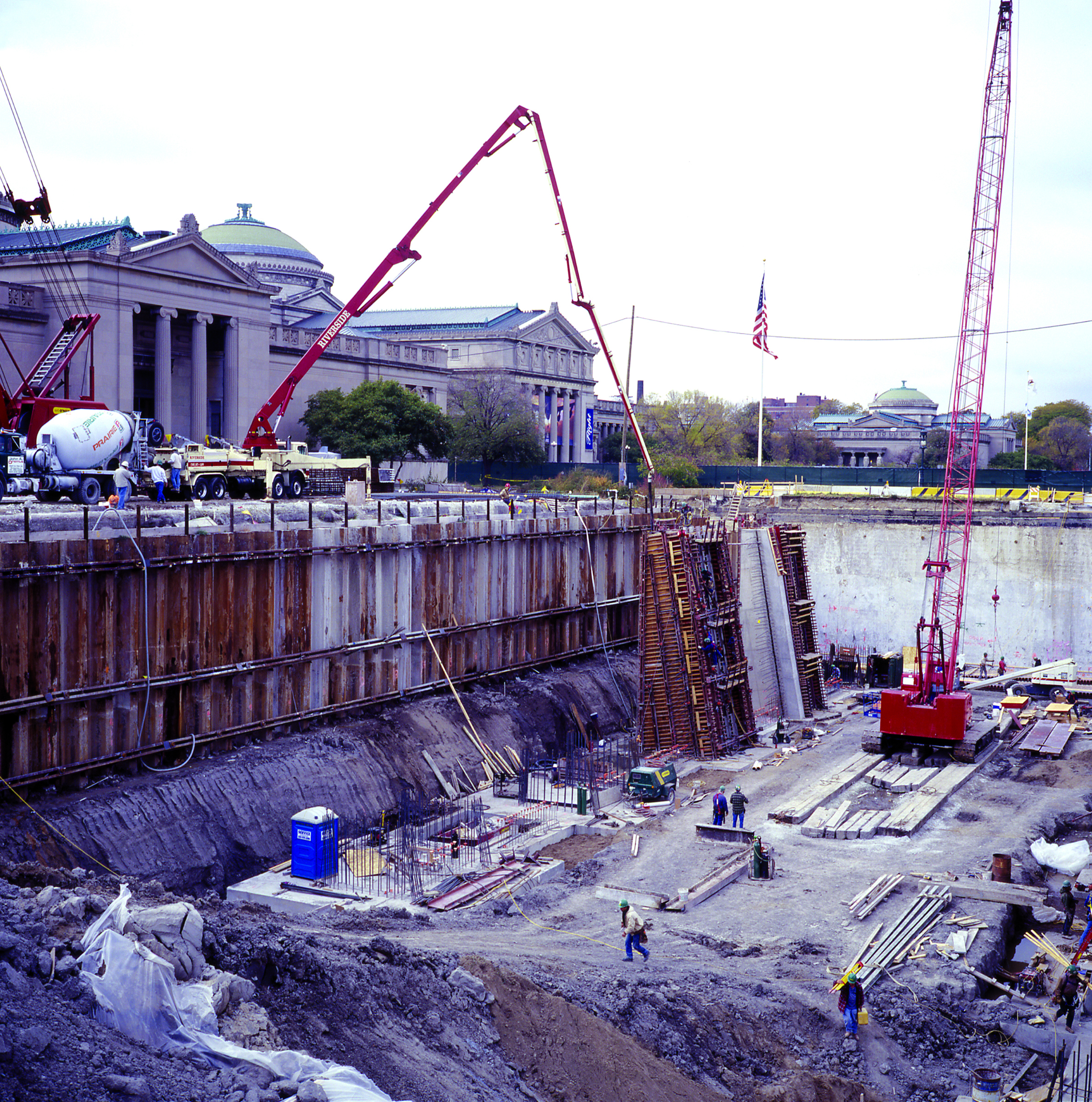RIVERSIDE CONCRETE PUMPING COMPLETES ENCASEMENT OF WWII SUBMARINE

Riverside Concrete Pumping, Brookfield, IL, is scheduled to complete work on the New U-505 Experience at the renowned Chicago Museum of Science and Industry. General contractor O’Neil Industries, Inc., a division of the W.E. O’Neil Construction Company of Chicago, is overseeing the $35 million underground encasement of the U-505 WWII submarine. Estimated to be open to the public in Spring 2005, the new exhibit, will also feature artifacts, video of the capture and the submarine’s move from Lake Michigan to its outdoor location on Lakeshore Drive and to its current underground location.
Demolition crews broke ground in February 2003 on the new exhibit space, which measures 35,000 square feet and extends 40 feet below grade. Lohan Caprile Goettsch Architects of Chicago designed the new exhibit space, a 75 x 300-foot underground concrete pen invisible at grade level. O’Neil and subcontractors have been on site for six months completing the labor-intensive concrete work needed to meet the architects’ objectives.
O’Neil’s Vice President of Operations James Sikich said the owners required an architectural, panelized finish for the interior of the pen. Concrete supply and a careful installation process both played a role in the successful and safe completion of the enclosure’s walls. Project owners insisted that the total 7,125 yards of architectural concrete came from a single source. “Every yard had to come from Prairie,” said Bill Malone, Concrete Construction Superintendent O’Neil, referring to ready-mix supplier Prairie Group, out of southeast Illinois. “We had to ensure that the same aggregate, sand and cement mix was supplied throughout the project.”
Before awarding the contract for the several small, monolithic pours the project would require, Sikich said several tests and mock-ups were executed to ensure objectives were met. The pumping work was awarded to Riverside Concrete Pumping. “There have been no long, mega-yard pours on this project,” said Riverside’s Jack Andersen. “We’ve had to be very careful to achieve the aesthetic treatment and quality they need on this project.”
The walls of the underground structure are canted back at a 35-degree angle, and measure in at three feet thick nearer the bottom of the excavation, gradually thinning to one-foot thick near grade. Wall pours were divided into sections measuring anywhere from 20 to 27 feet wide by 35 to 37 feet high. For each pour, contractors utilized 15,000 to 20,000-pound thin gang forms to denote the concrete placement and reveals. The forms were outfitted with pre-determined pump ports, strategically installed throughout the form to minimize air pockets that could affect performance of the concrete. Buttress rebar, fabricated on site, was installed, and Riverside’s Schwing KVM 42 went to work. The pump ports within the forms were spaced six to nine feet apart, and the end hose was maneuvered horizontally through each port across the bottom of the wall, then vertically to the second highest row of ports, and horizontal placement was repeated. Each wall was pumped beginning at the base of the excavation because of the unique angle of the walls. Pumping from the bottom also minimized segregation and provided the aesthetically pleasing wall project owners were looking for.
“Because of the 35-degree angle, it was critical to prime the boom properly and keep the pumping system filled at all times to prevent freefalling of concrete. Freefalling would cause honeycombs and a drastically affect the quality of the project,” said Andersen. External vibrators were also used to control air pockets within the placed concrete.
Riverside was on the job site for six months, completing small slab pours, ranging from an estimated 100 yards to 220 yards. Their KVM 42 truck-mounted concrete pump with four-section placing boom was the only pump used, and Andersen was extremely satisfied with the boom pump’s performance and reach. “You hear about big booms on big projects everywhere you go. On this particular project, I can say that the 42-meter was the perfect piece of equipment.”
With 124’-10” of reach, the boom could reach everywhere within the excavation. “It set up easily and was able to reach everywhere I we needed to. It provided the reach, stability and dependability necessary to this job,” said Andersen.
Concrete installation on the enclosure has been standard for each wall within the excavation with the exception of the bottom of the wall on the southwest corner. In that particular corner, contractors are working to create a link, or underground hallway, to the rest of the museum 40 feet below grade.
The museum hopes the sub’s new display case will serve as a reminder of complex naval technologies as well as a memorial to those who gave their lives during World War II. The U-505 was commissioned for action on August 26, 1941 and captured during battle in June of 1944. Currently, the submarine is the only vessel of its kind on display in the United States and is one of only five u-boats left in the world. In 1954, the Chicago Museum of Science and Industry moved the U-5405 from the shore of lake Michigan across Lake Shore Drive to the Museum’s east side to an outdoor exhibit space. Midwest weather took its toll on the 700-ton, 252-foot sub’s paint job. The most recent reconstruction and relocation of the submarine has taken museum officials the last fourteen years to plan and execute.
Officials scheduled a team of movers to transport the submarine from its outdoor exhibit to it’s new underground home. The museum contracted NORSAR Services, Inc., an Everett-based engineering transport and lifting company, to move the sub from its outdoor location to its new climate-controlled, underground exhibit. Once it arrived at the opening of the excavation, the U-505 made its four-day, four-story decent to the underground floor below. Crews positioned dollies under the U-boat to maneuver the submarine to rest on the diagonal of the new space.
Once the submarine is fixed within its new exhibit space, contractors will close off the enclosure. Imbeds at the top of the buttresses allow for the installation of large steel box girders, which will be topped off with a metal deck and layered gyrofoam. The cover will be finished off with soil and grass.








